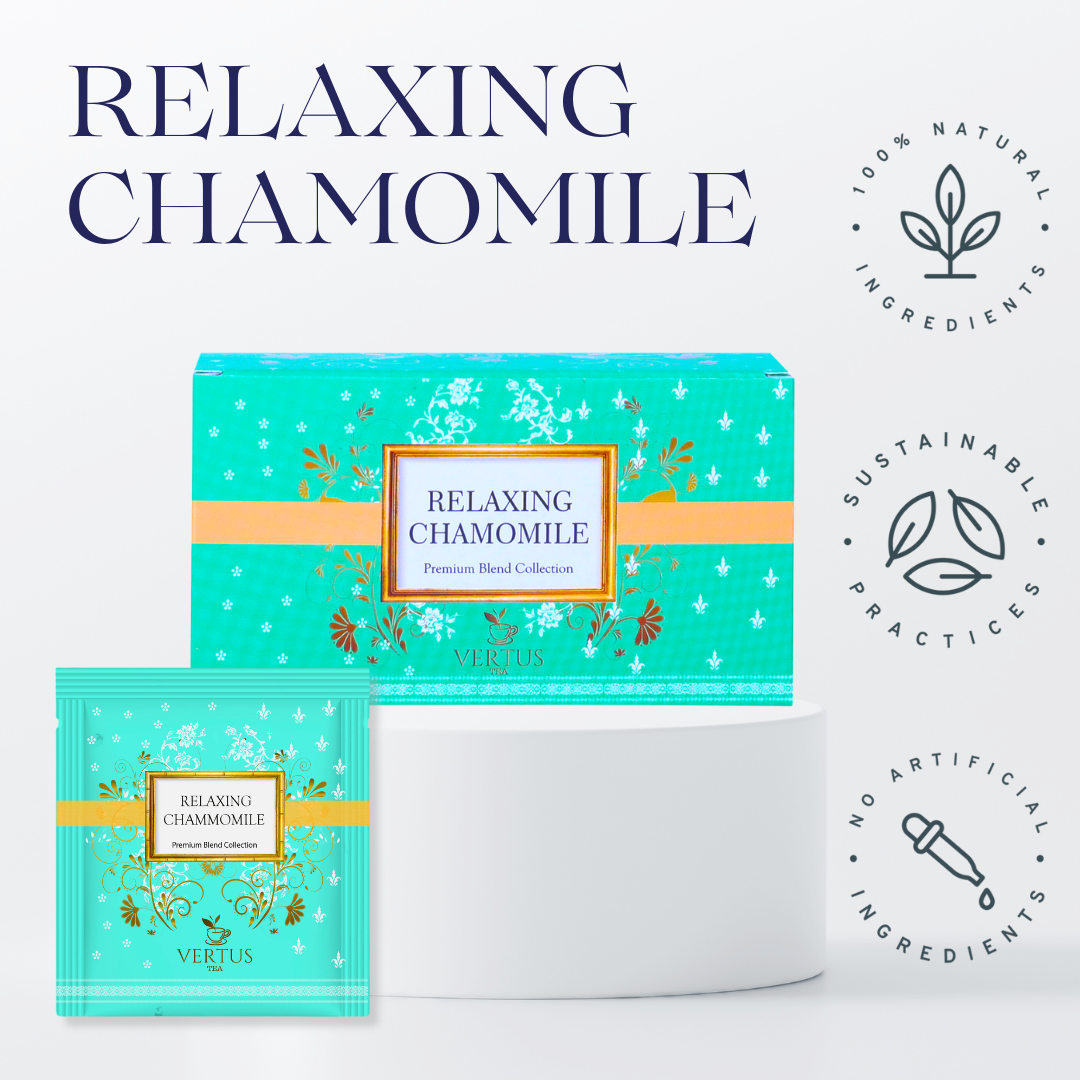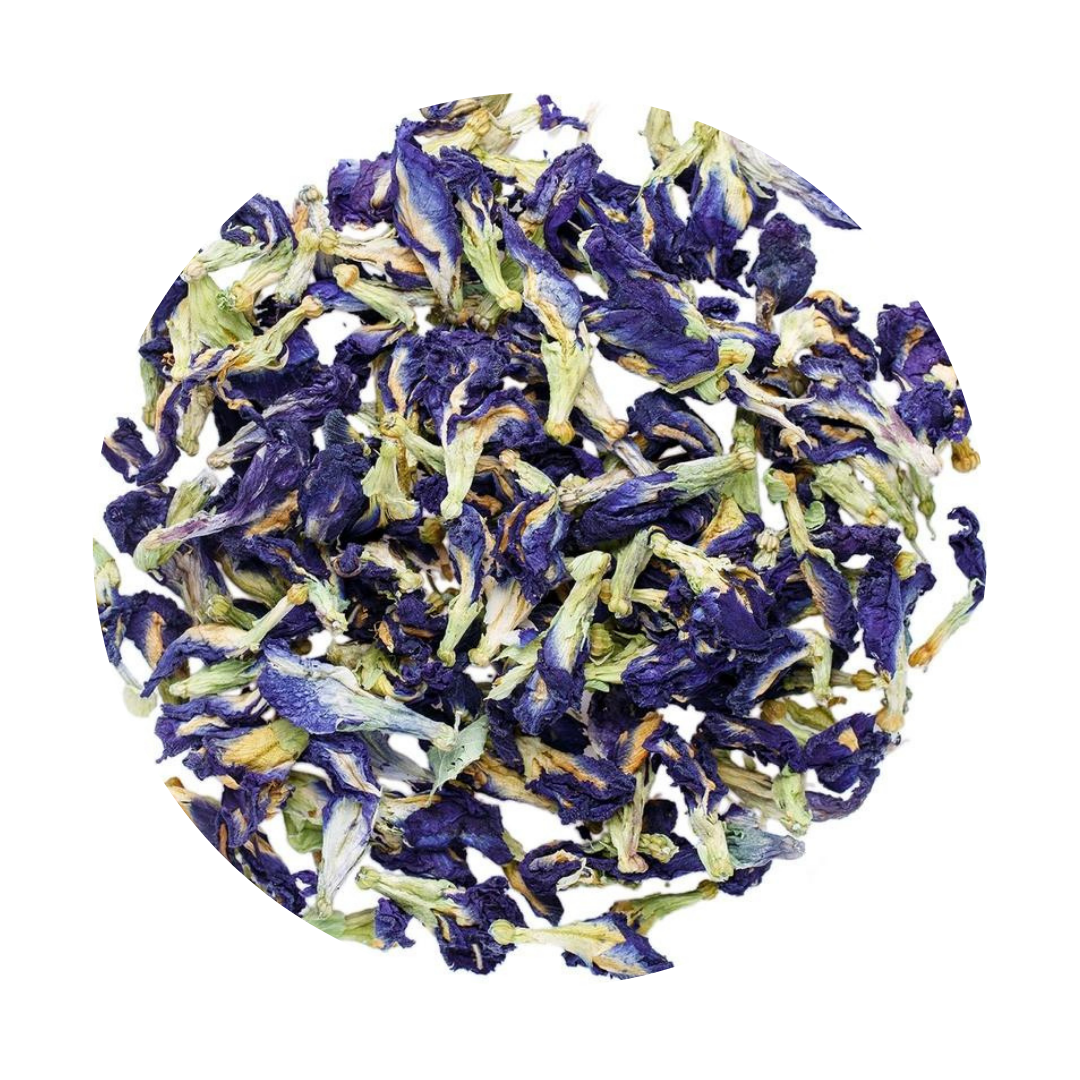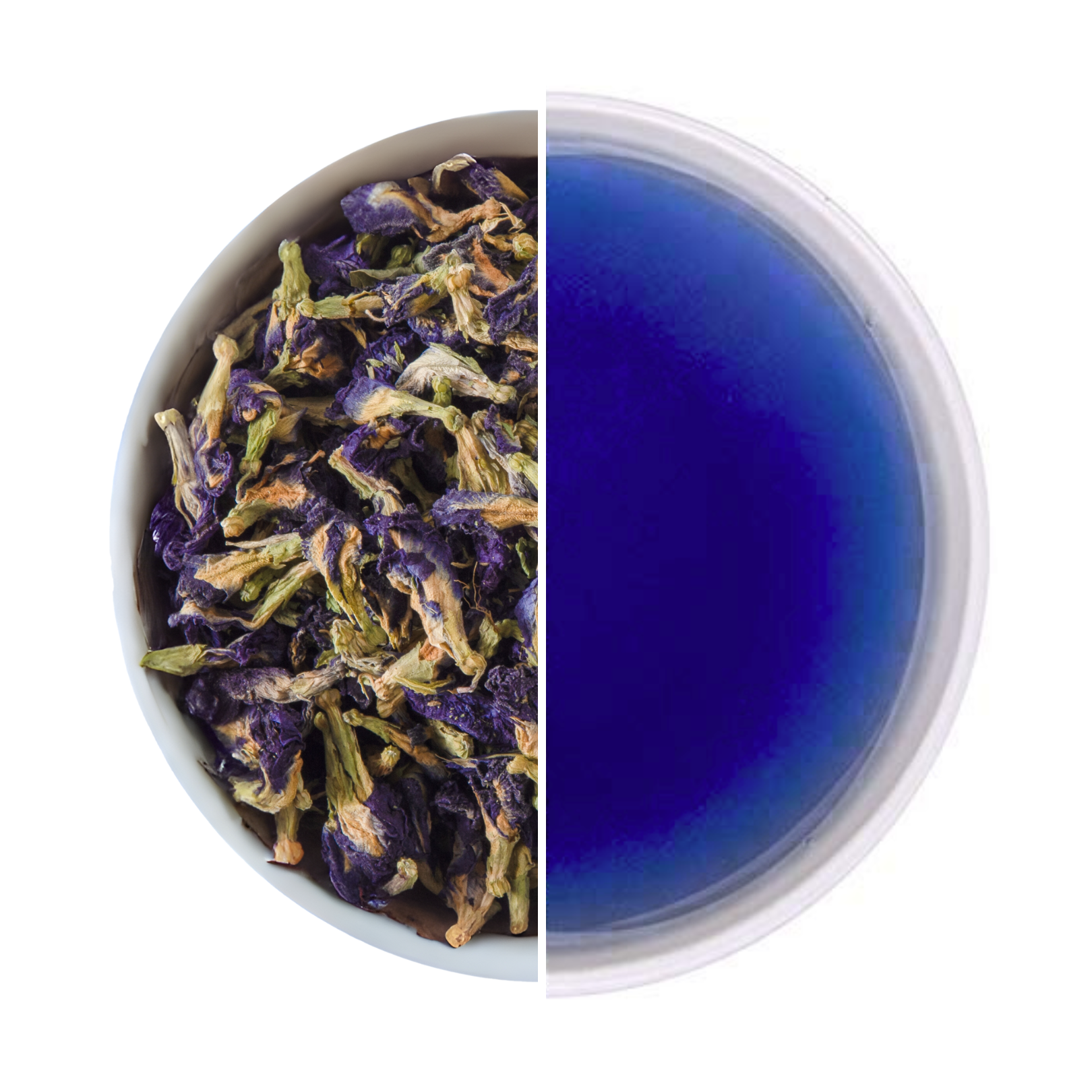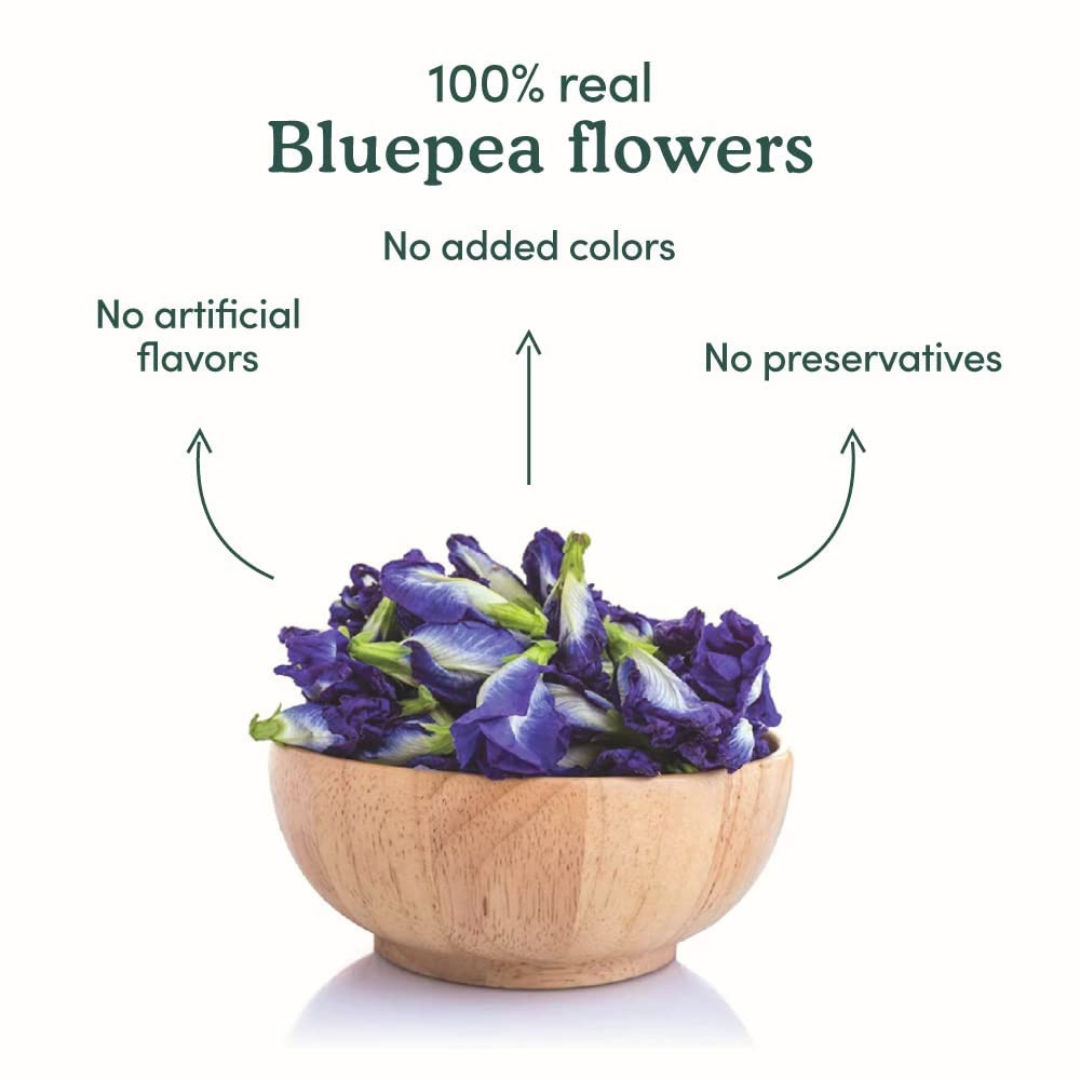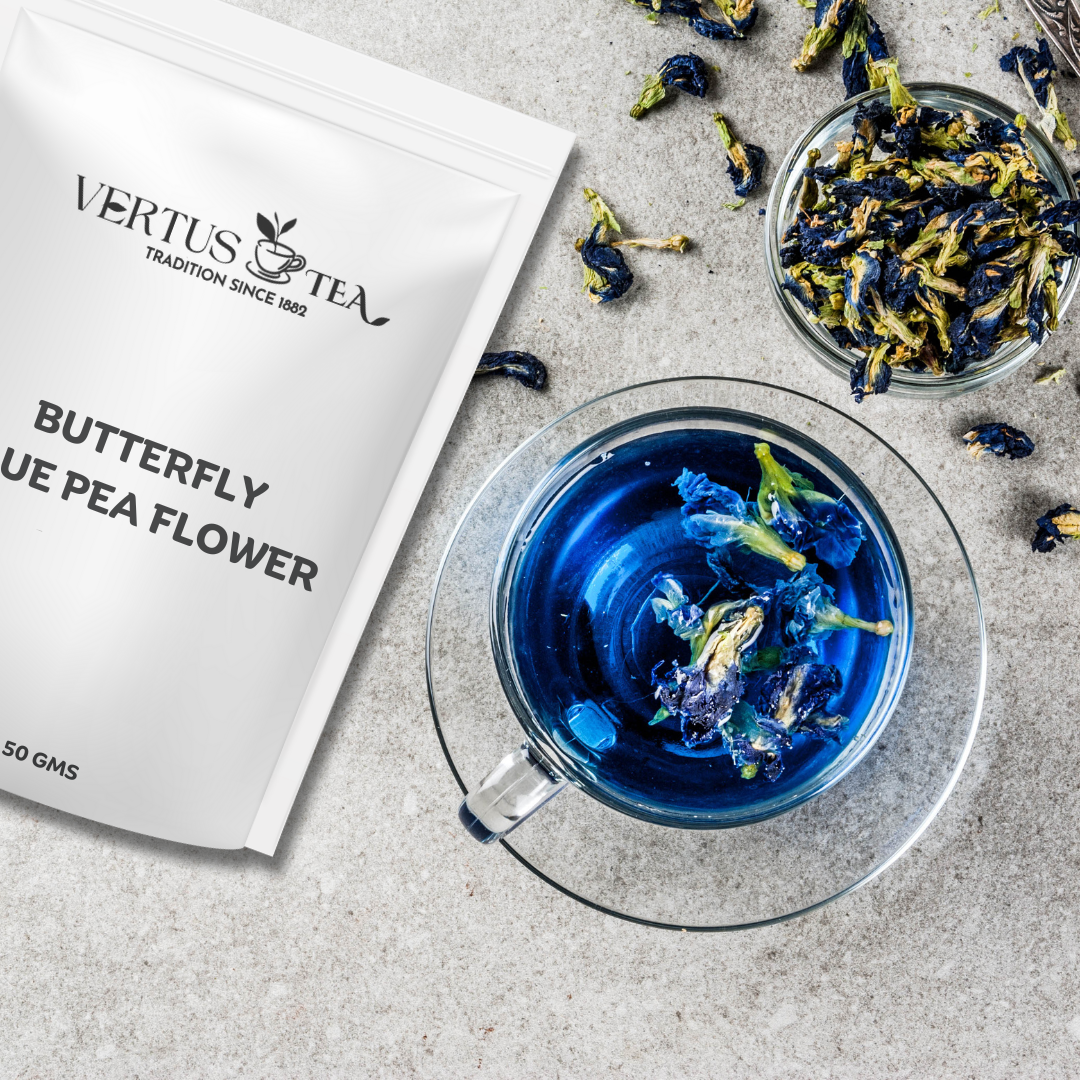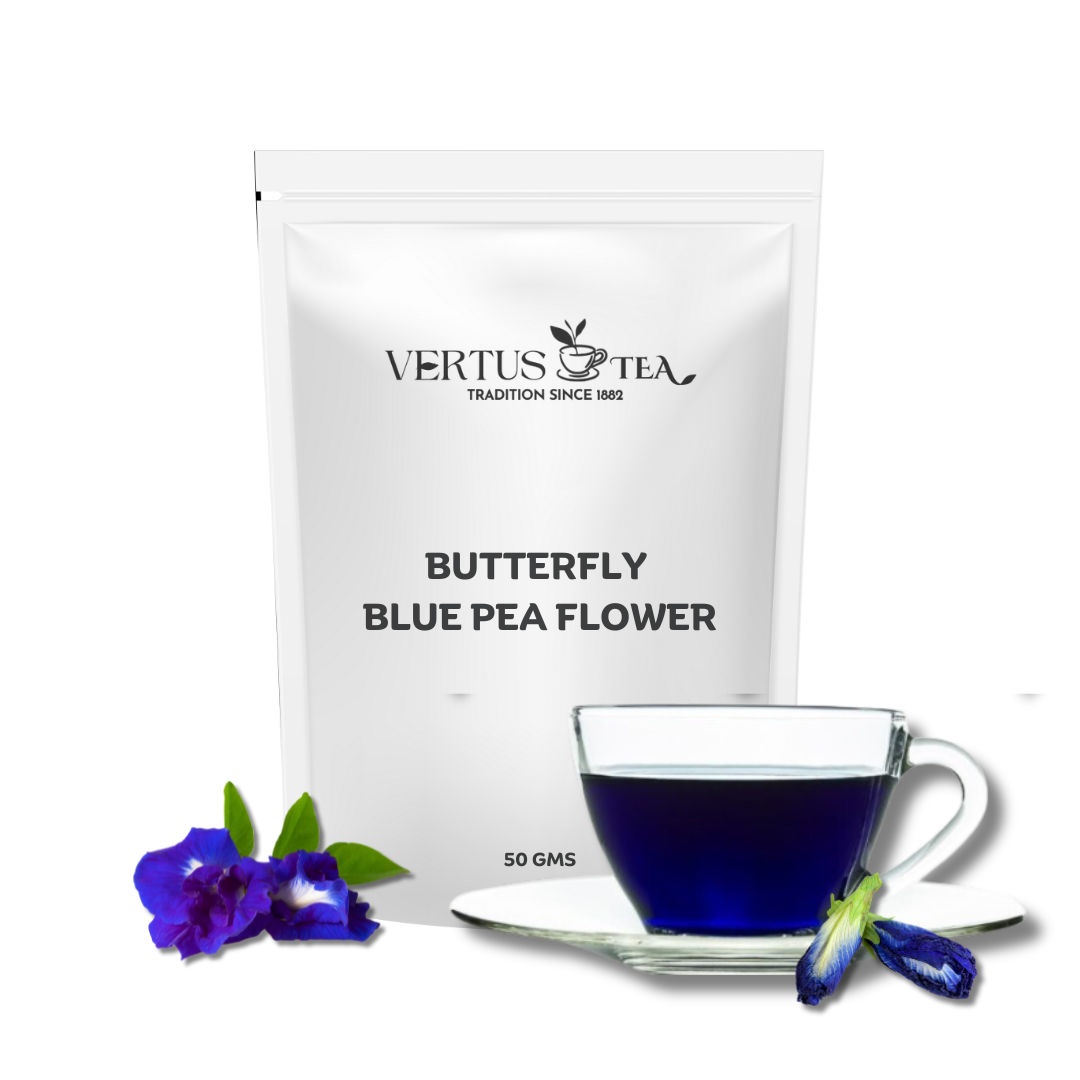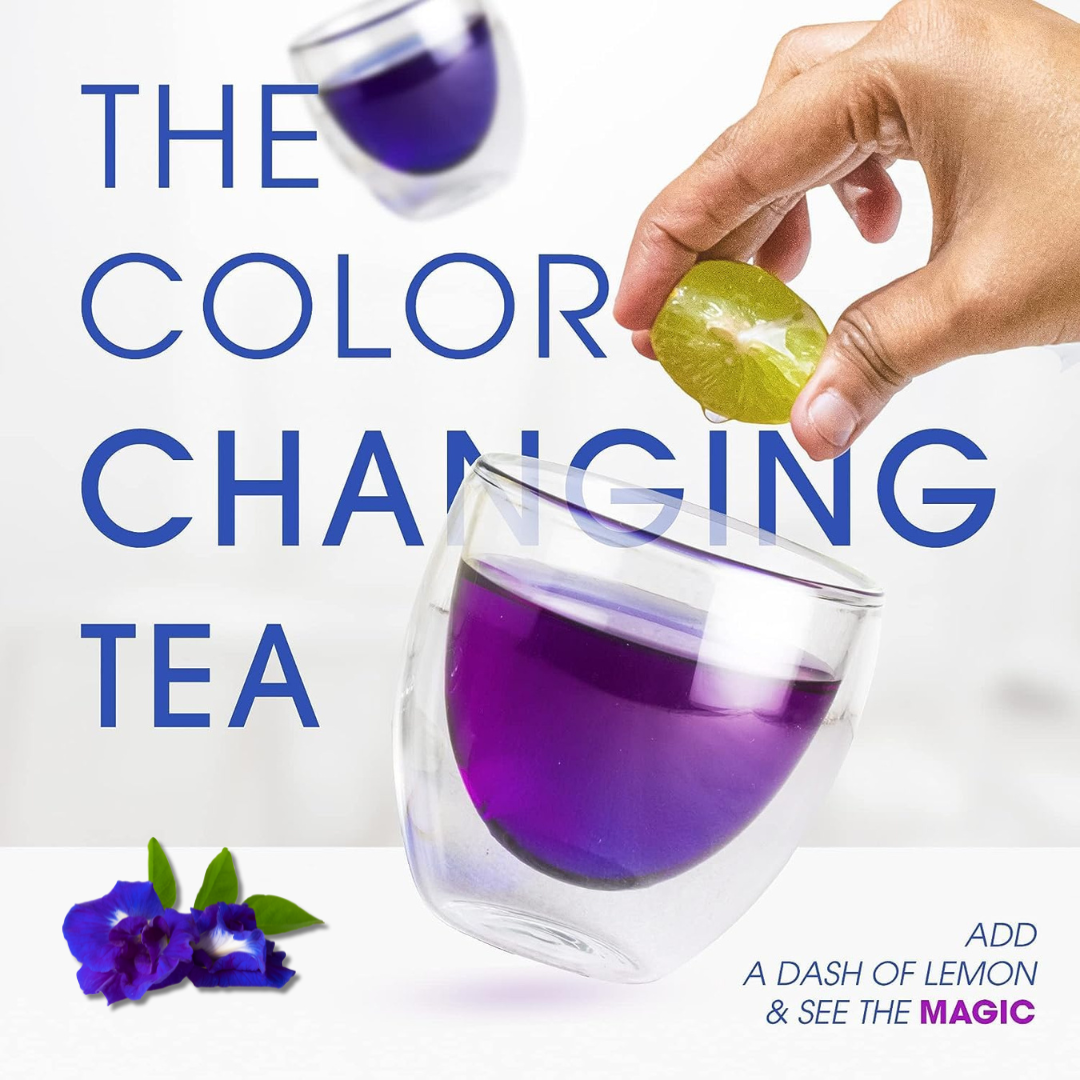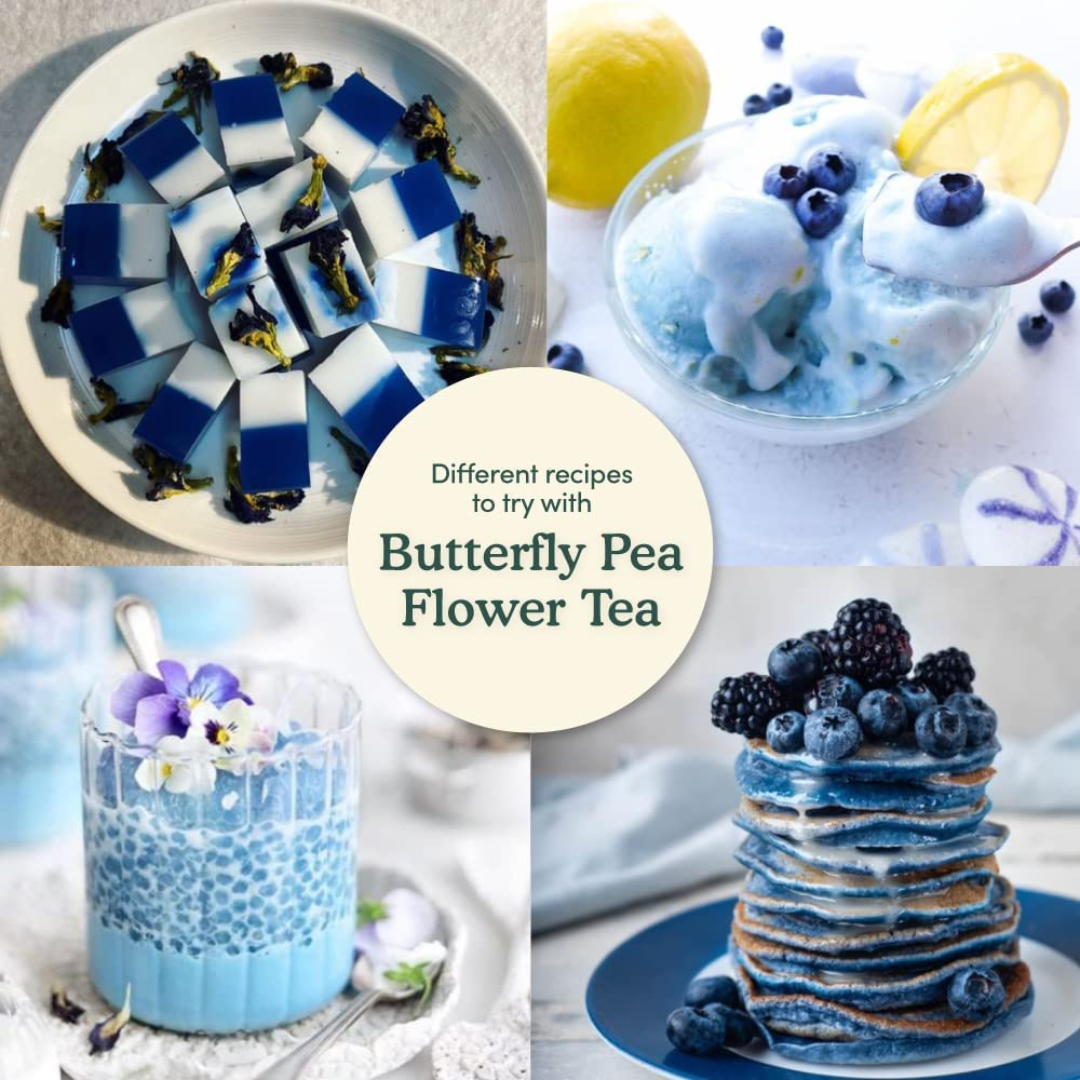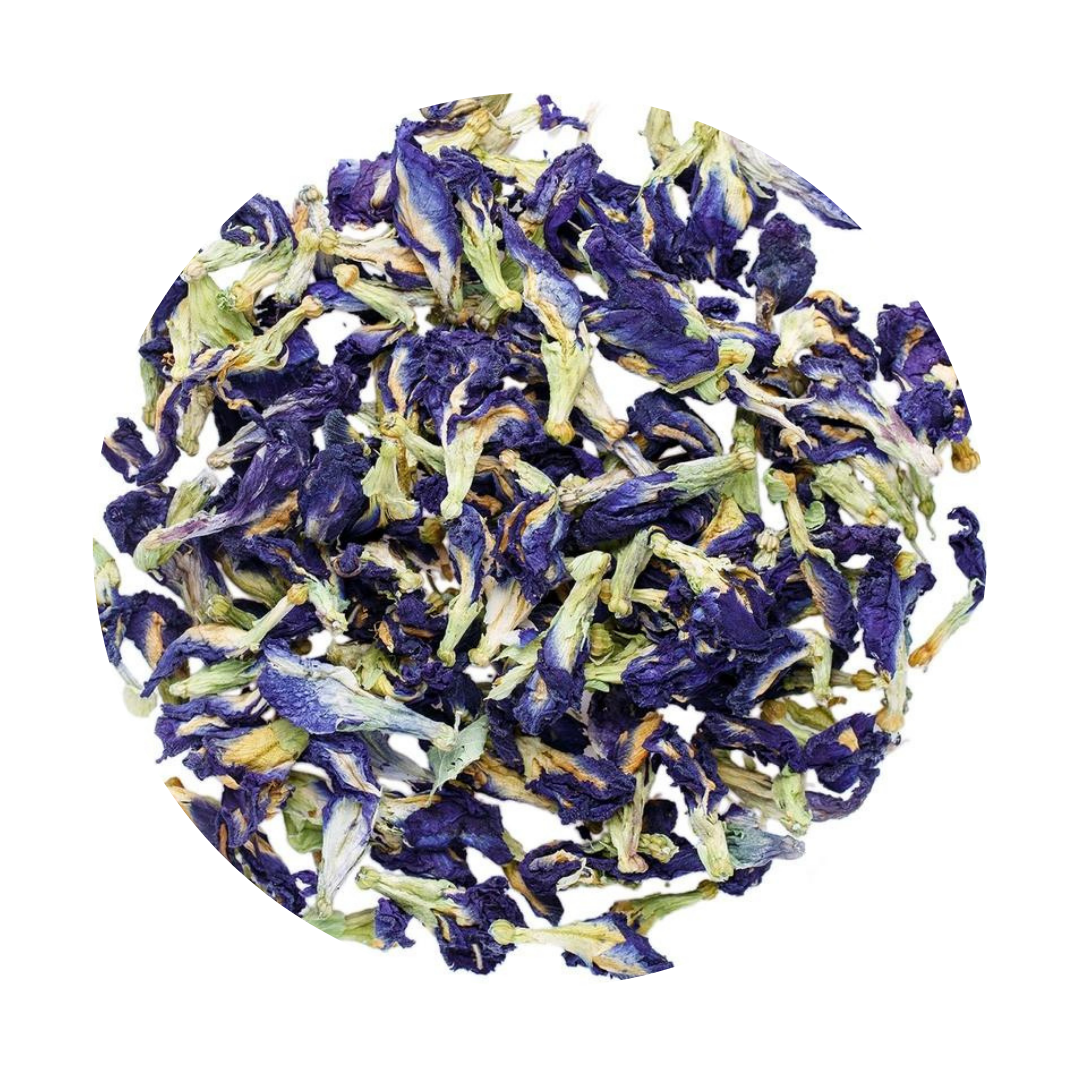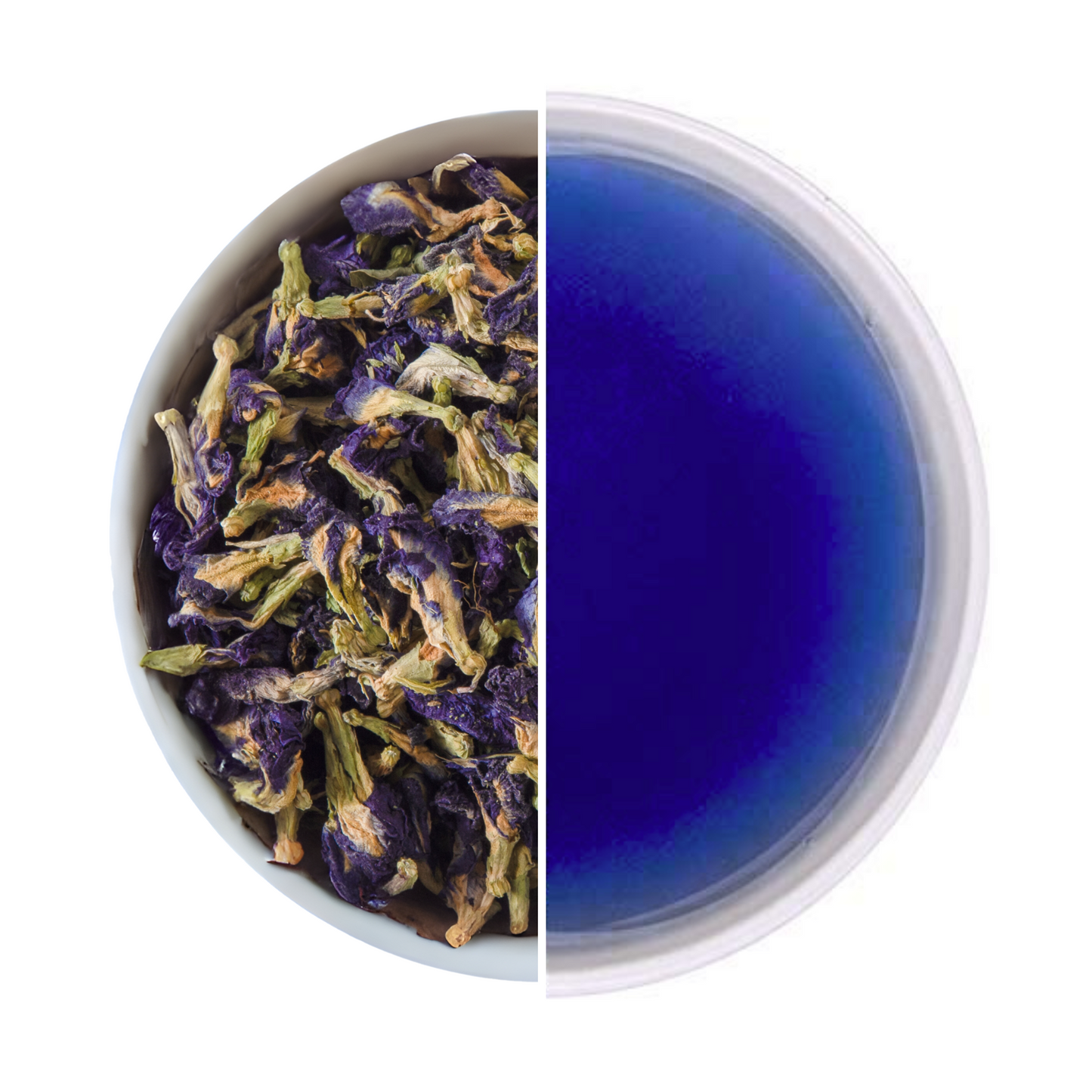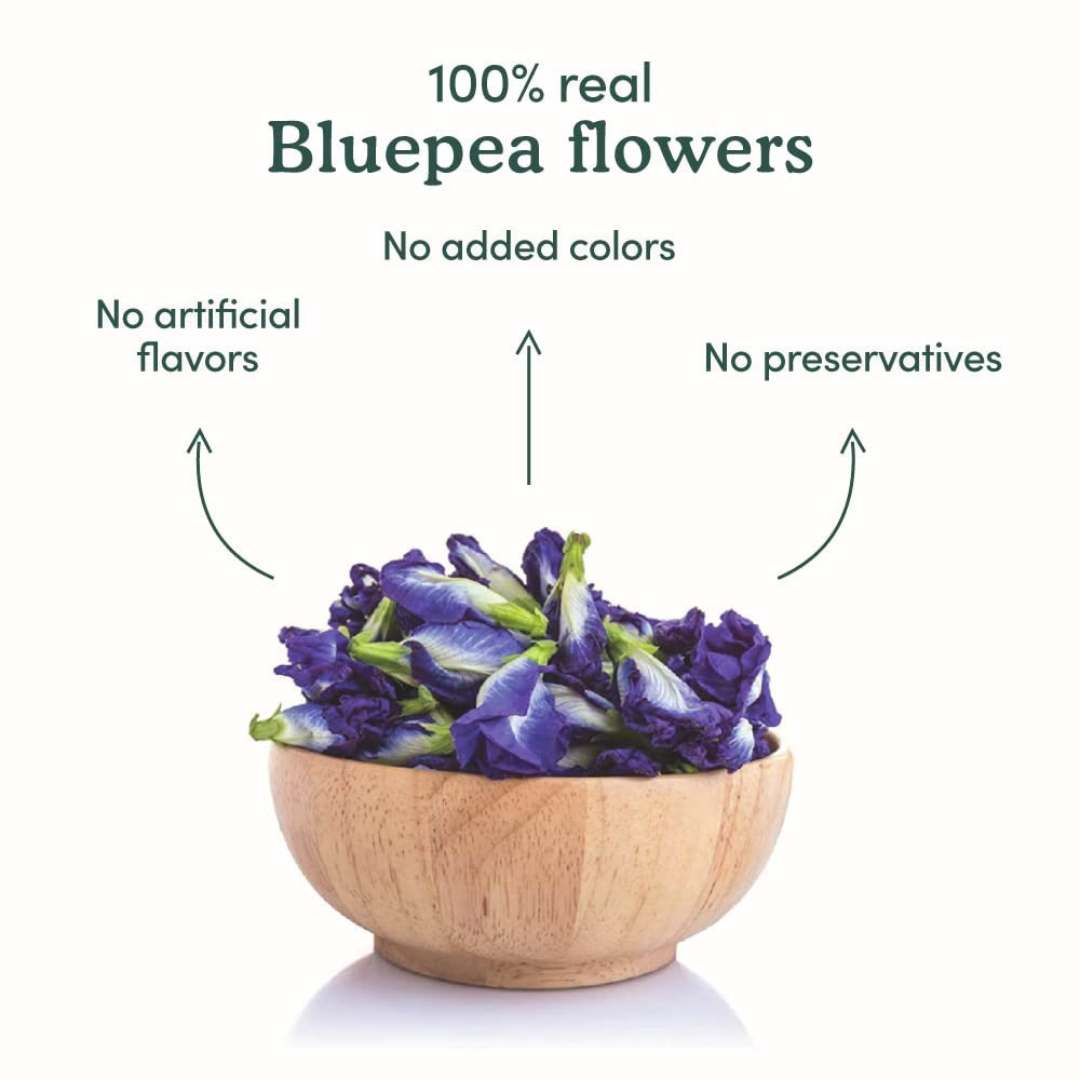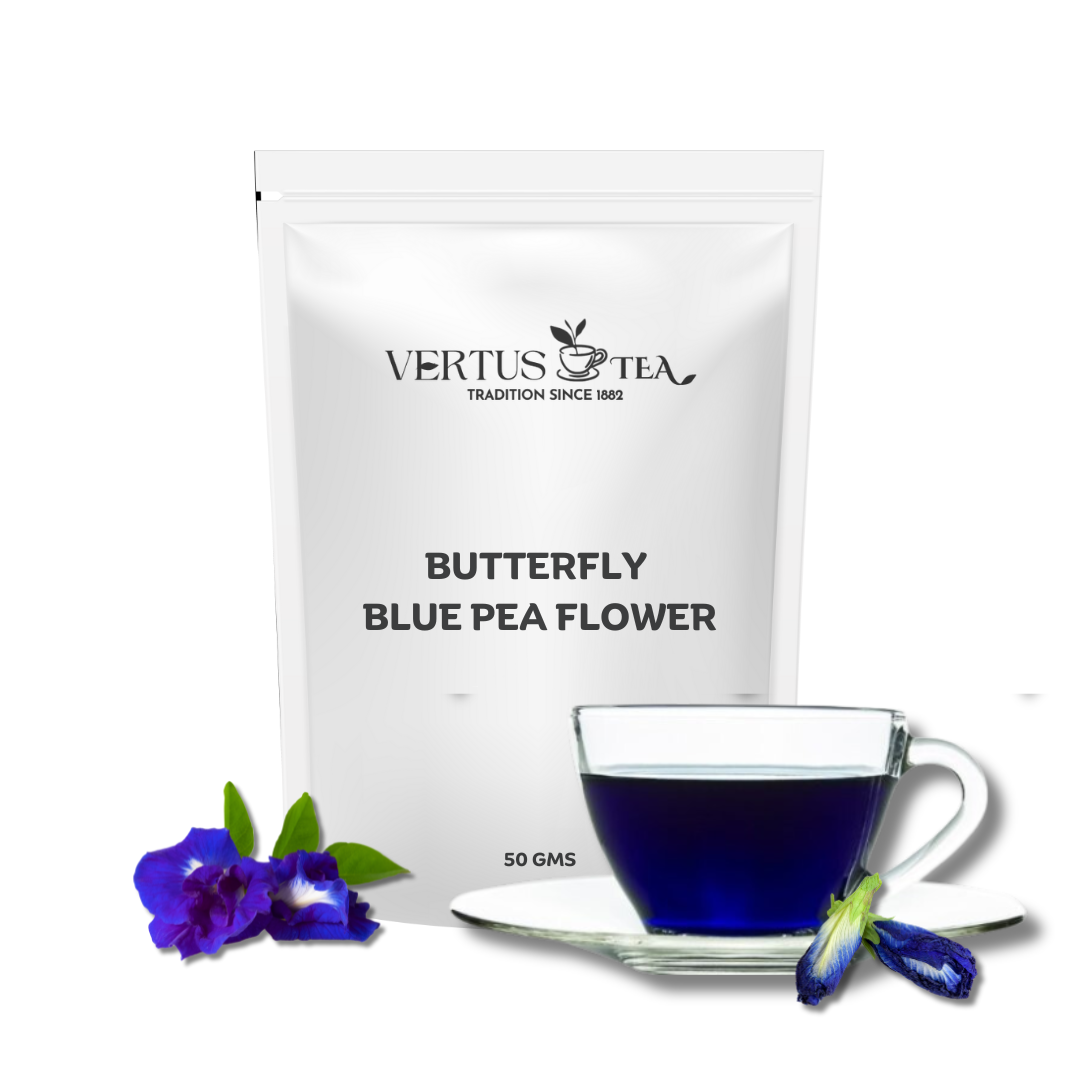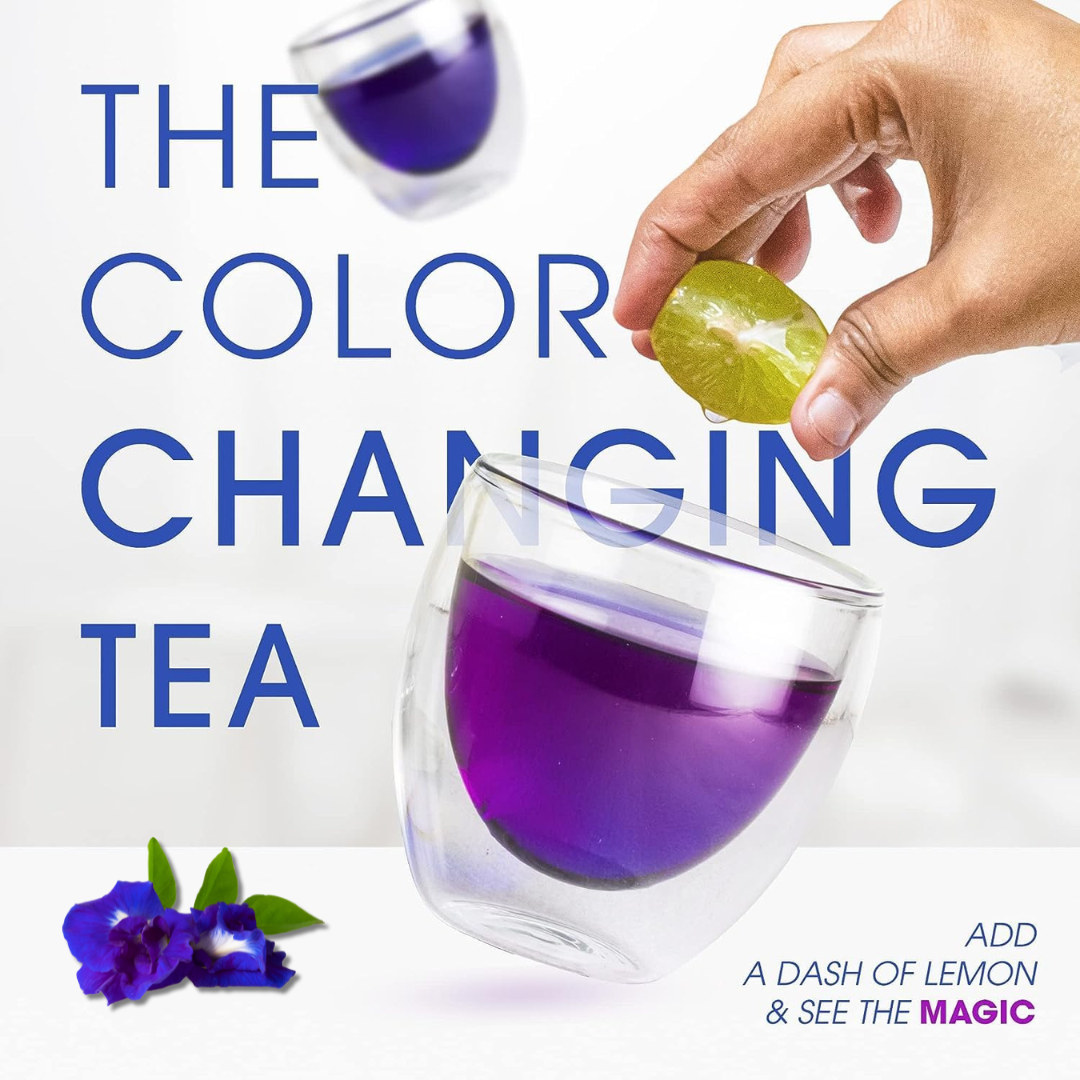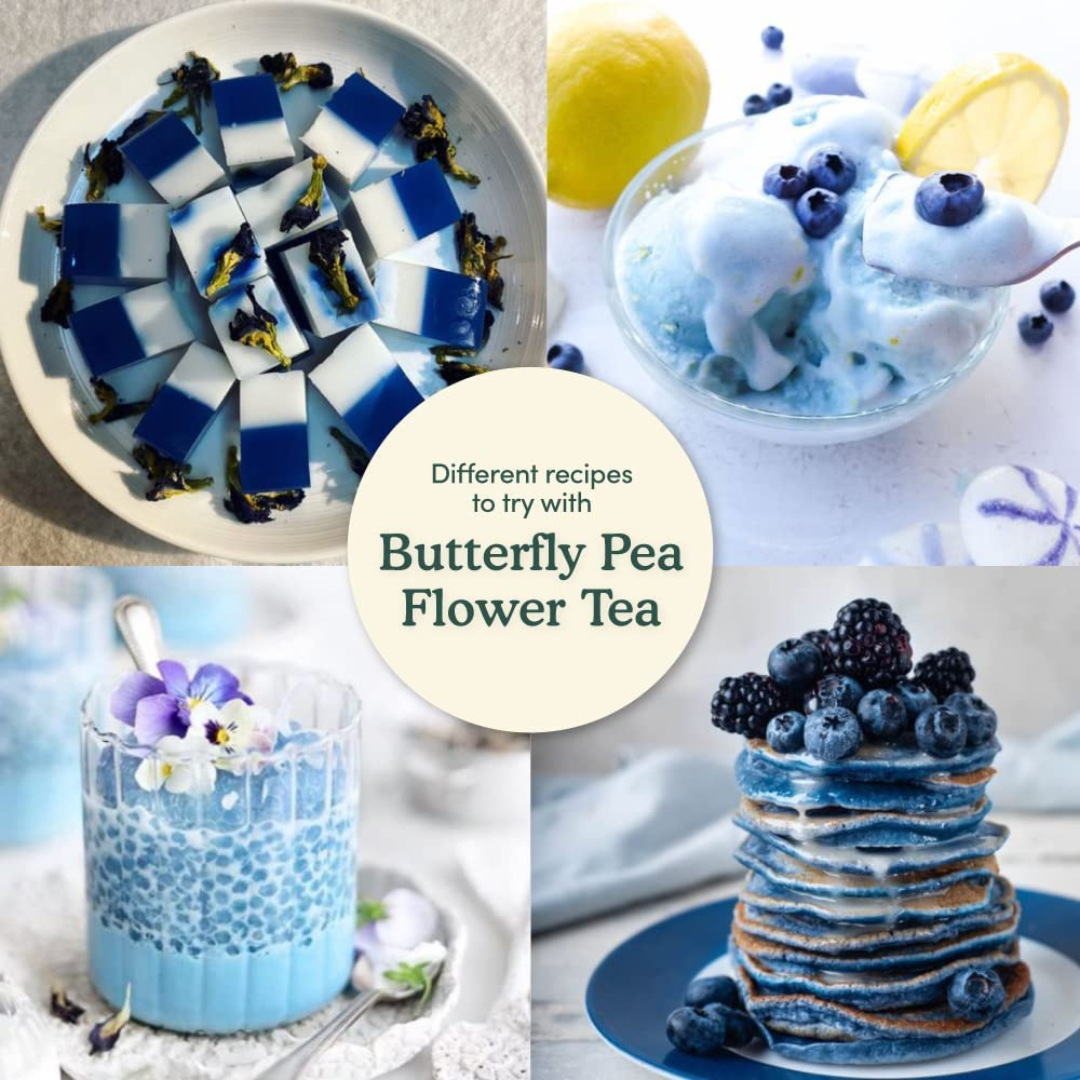FAQs
What is the blue pea flower and how is it used?
The blue pea flower, also known as butterfly pea flower, is a vibrant blue flower native to Southeast Asia. It's primarily used to make a unique blue-colored tea. The flowers can also be found in some culinary applications and natural dyes.
Does blue pea flower tea have any health benefits?
Here are some potential benefits associated with butterfly pea flower:
- Antioxidant Properties: Butterfly pea flower contains antioxidants such as flavonoids, anthocyanins, and phenolic compounds, which help protect cells from damage caused by free radicals.
- Anti-inflammatory Effects: Compounds present in butterfly pea flower may exhibit anti-inflammatory properties, which could help reduce inflammation in the body and alleviate related conditions.
- Cognitive Benefits: Some research suggests that butterfly pea flower may have cognitive-enhancing effects. It is believed to increase acetylcholine levels in the brain, which could potentially improve memory and cognitive function.
- Stress Reduction: Butterfly pea flower is traditionally used in certain cultures as a stress-relieving and calming agent. It may help promote relaxation and reduce anxiety levels.
- Skin and Hair Health: The antioxidants found in butterfly pea flower may contribute to healthier skin by protecting against oxidative stress and premature aging. Additionally, it is sometimes used in hair care products for its purported benefits in promoting hair growth and maintaining scalp health.
- Eye Health: Some traditional medicinal practices use butterfly pea flower extract to support eye health and improve vision. It is believed to contain compounds that nourish the eyes and protect them from damage.
- Digestive Support: Butterfly pea flower is sometimes used to promote gastrointestinal health. It may help soothe the digestive system, alleviate indigestion, and support regular bowel movements.
- Natural Food Coloring: The vibrant blue color of butterfly pea flower is often used as a natural food coloring in various culinary applications, adding visual appeal to dishes and beverages without the need for artificial colorants.
Are there any safety concerns with consuming blue pea flower?
While generally safe for most people in moderation, the seeds and roots of the plant can be toxic and cause nausea or diarrhea. Pregnant and breastfeeding women should avoid consuming blue pea flower due to a lack of sufficient research on its safety in these cases. Consulting a healthcare provider before consuming blue pea flower for any medicinal purpose is crucial.
How can I incorporate blue pea flower into my diet?
The most common way to consume blue pea flower is as a tea. Simply steep the dried flowers in hot water to create a vibrant blue beverage. You can also find the flower in some butterfly pea flower-infused food and drinks or use it as a natural dye for certain applications. Remember, it's important to consult a medical professional before using it for any purpose beyond food coloring.
